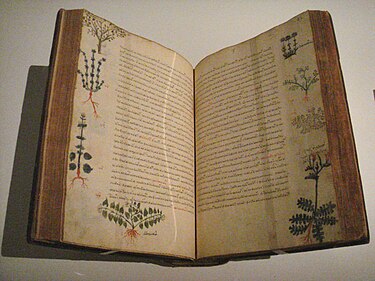Posted by : Unknown
Friday, 18 January 2013
This article is about a type of book. For plants used as herbs, see herb. For herbal medicine and related topics, see herbalism.
A(n)[nb 1] herbal is "a collection of descriptions of plants put together for medicinal purposes."[1] Expressed more elaborately — it is a book containing the names and descriptions of plants, usually with information on their virtues (properties)[2] — and in particular their medicinal, tonic, culinary, toxic, hallucinatory, aromatic, or magical powers, and the legends associated with them. A herbal may also classify the plants it describes,[3] may give recipes for herbal extracts, tinctures, or potions, and sometimes include mineral and animal medicaments in addition to those obtained from plants. Herbals were often illustrated to assist plant identification.[4]
Herbals were among the first literature produced in Ancient Egypt, China, India, and Europe[5] as the medical wisdom of the day accumulated by herbalists, apothecaries and physicians.[6]
Herbals were also among the first books to be printed in both China and
Europe. In Western Europe herbals flourished for two centuries
following the invention of moveable type (c. 1470–1670).[7]
In the late 17th century, the rise of modern chemistry, toxicology and pharmacology reduced the medicinal value of the classical herbal. As reference manuals for botanical study and plant identification herbals were supplanted by Floras — systematic accounts of the plants found growing in a particular region, with scientifically accurate botanical descriptions, classification, and illustrations.[8] Herbals have seen a modest revival in the western world since the last decades of the 20th century, as herbalism and related disciplines (such as homeopathy and aromatherapy) became popular forms of

